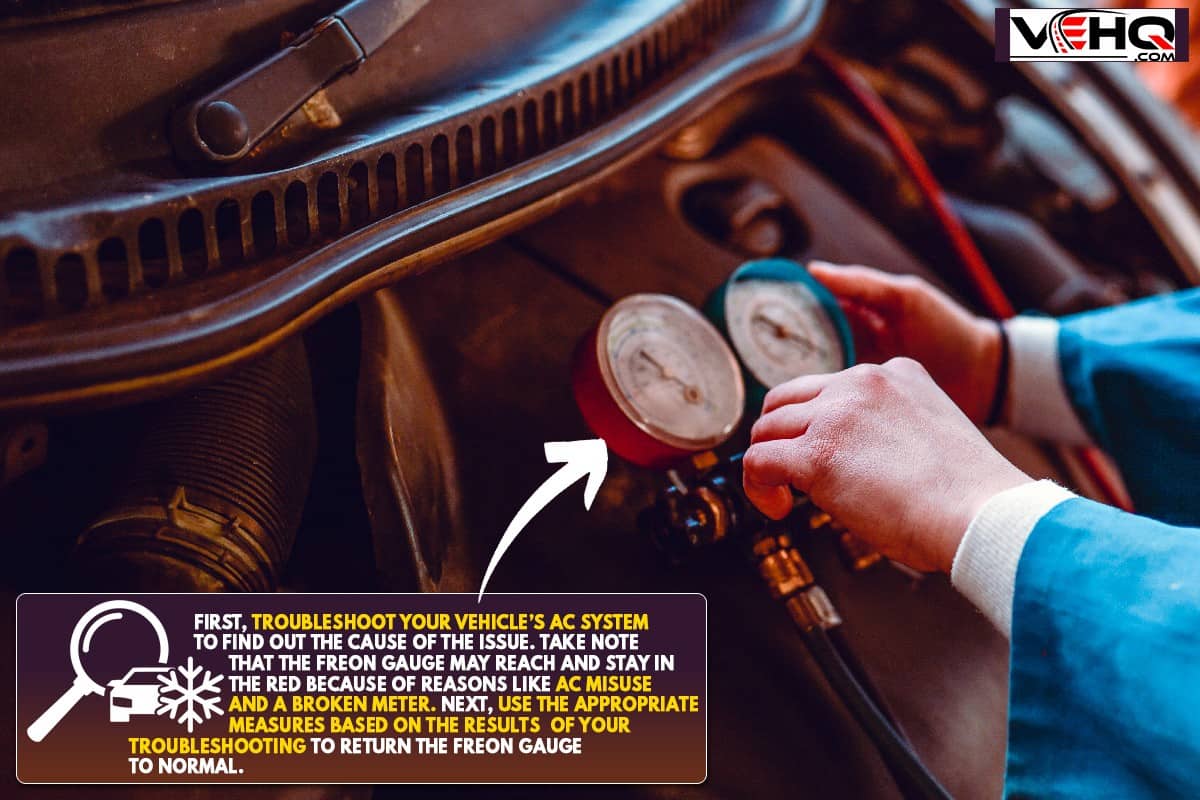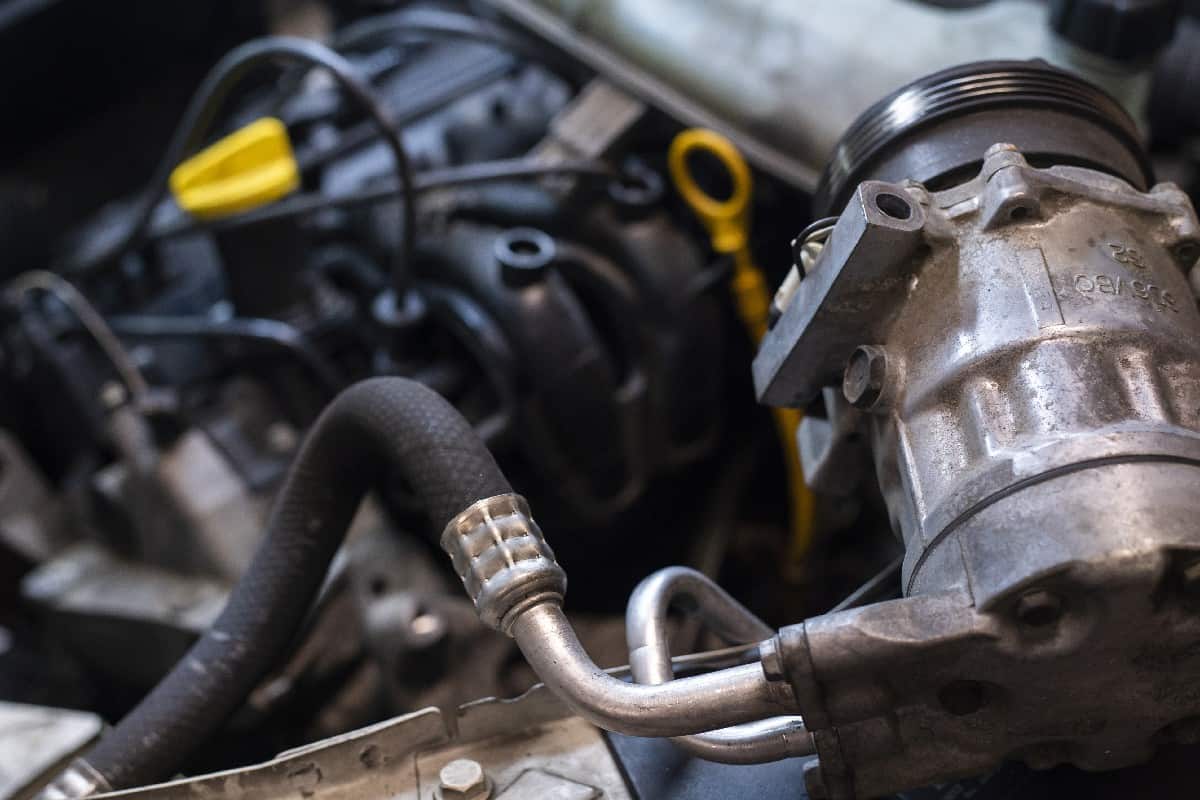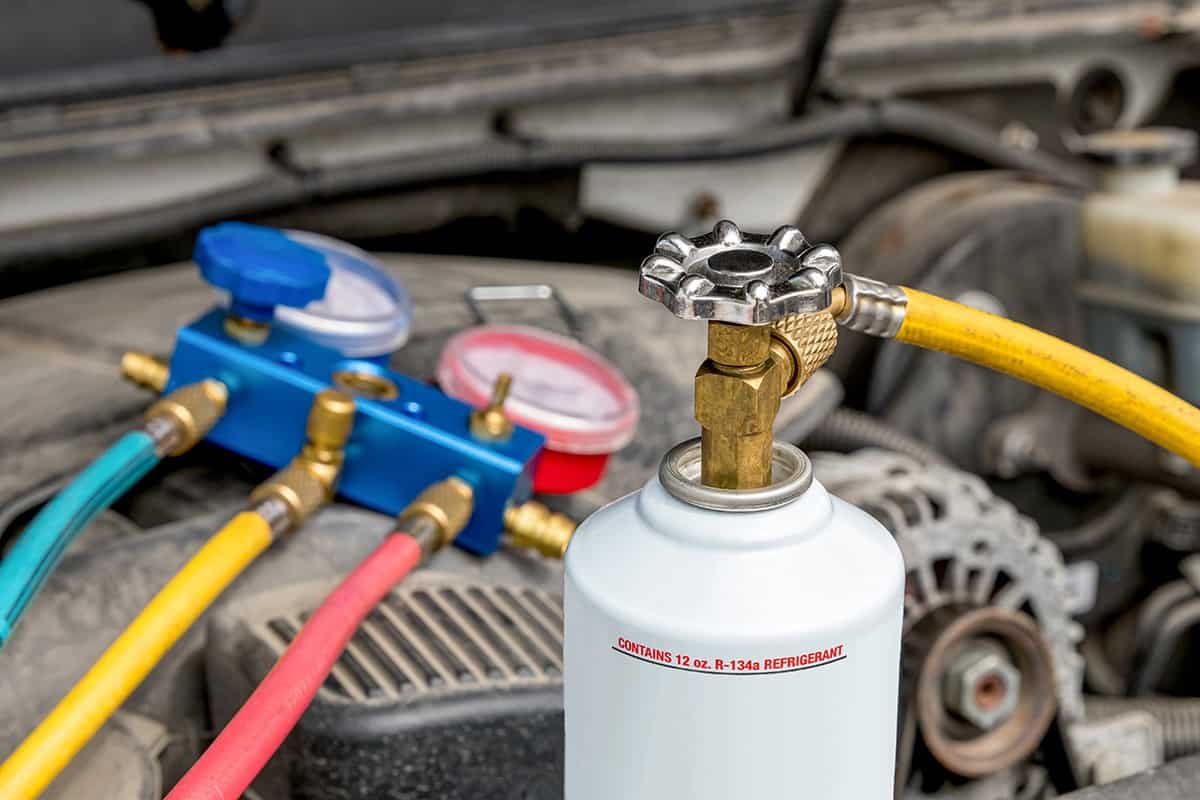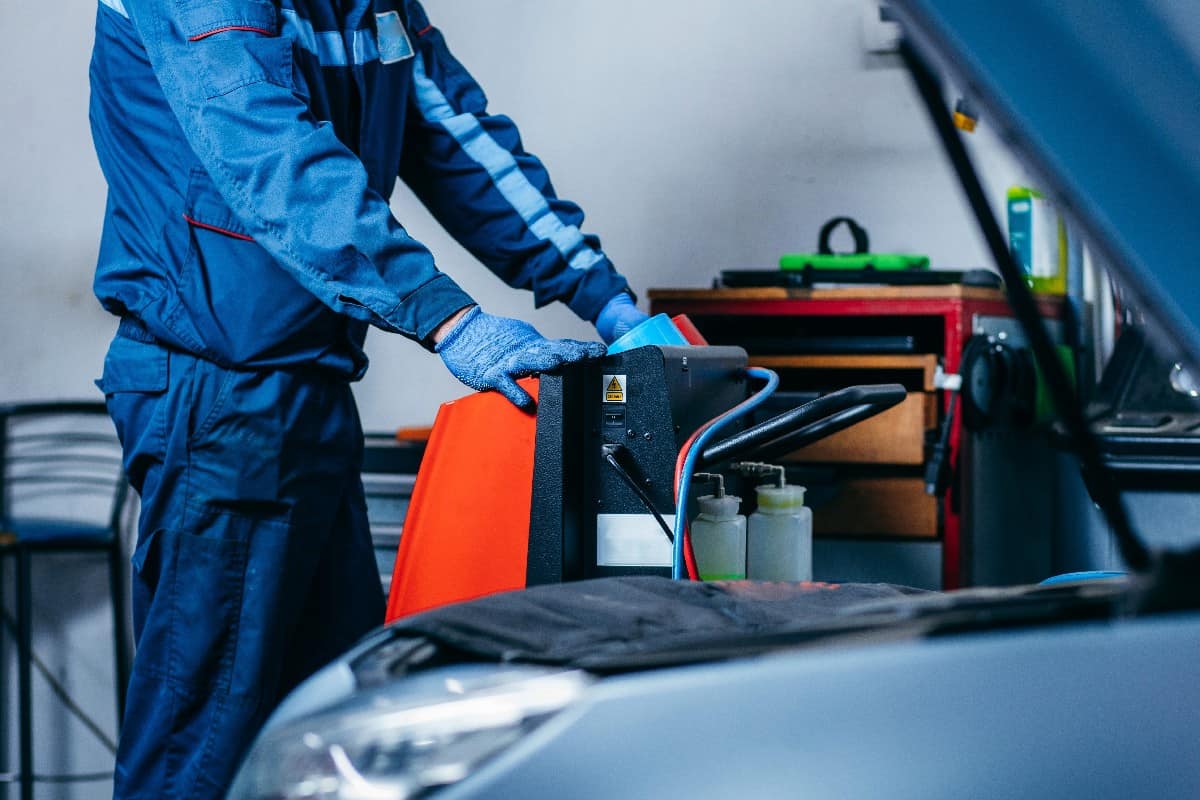Seeing your car's gauges in the red is usually worrisome, especially for the vehicle's AC system. Now you're wondering what you can do if you see your car's freon gauge in the red zone. We researched and consulted with experts regarding this concern, and here's what we found.
First, troubleshoot your vehicle's AC system to find out the cause of the issue. Take note that the freon gauge may reach and stay in the red because of reasons like AC misuse and a broken meter. Next, use the appropriate measures based on the results of your troubleshooting to return the freon gauge to normal.
Take note that other possible suspects exist that may encourage the freon gauge to be in the red. So keep reading to know about these potential culprits. We'll also tackle some solutions you may use to bring the freon gauge and your car's AC to optimal efficiency.

What Causes The Freon Gauge To Be In The Red?
A vehicle's freon gauge may enter and remain in the red zone generally because of three reasons:
- The car isn't running, and the gauge is broken
- The AC system is at the coldest setting for an extended period
- The fan switch is at the highest setting for a long duration
Although the possible suspects mentioned above are relatively common culprits, a car's freon gauge may also be in the red because of other reasons like:
Condenser Fan Problems
Also called the cooling fan, the condenser fan is responsible for forcing cold air out of the grille and into the cabin. But this assembly may encounter problems, such as making the freon gauge enter the red zone. These issues may come from different origins, such as:
- Blown fuse
- Faulty fan relay
- Bad wiring
- Low coolant
- Temperature sensor malfunction
- Visible physical harm to the fan's motor
Expansion Valve Failure
The expansion valve functions by reducing the freon or refrigerant's pressure as it flows through the evaporator. But this component can fail, which may cause it and nearby parts to overheat. As the expansion valve runs while the AC system is running, the freon gauge may enter and stay in the red area.
Condenser Clog
Debris may enter your vehicle's AC condenser, leading to the system working harder than usual. These particulates often include dirt and other road debris. Plus, these objects may restrict airflow inside the cabin, reducing the AC's efficiency.
Freon Overcharge
Putting more freon or coolant than recommended may cause harm to the compressor. It can result in an increase in pressure, which can also be one of the reasons why the freon gauge reaches and remains in the red zone.

How To Fix Freon Gauge That's Too High?

Turn off the car's AC and let it rest for a while. Then, check if the Freon gauge returns to normal. If not, you may need to troubleshoot the system further to find why the gauge is in the red.
Once found, continue the repair process by using the appropriate technique based on the result of your troubleshooting. Some of the possible solutions you may use are:
Remove The Condenser Blockage
Make sure that your vehicle is in a safe parking spot before starting this procedure. You might need extensive knowledge and skill in repairing cars to complete this operation, with a high risk of error. If in doubt, you should take it to a qualified repair shop.
Once you're ready, continue this task by following these steps:
What You'll Need
- Temperature gun
- Pliers
Step-by-Step Guide
- Disengage your vehicle's engine and allow it to cool for a few minutes.
- Open the hood and unclip the front grille. Carefully pull out the front grille afterward.
- Turn on the car's AC and use the temperature gun to find the blockage under the hood. Turn off the AC afterward.
- Blow pressurized air into the offending area to try and remove the clog.
- Turn on the AC again, and check the Freon gauge if it's still in the red.
If these steps don't fix the problem, and you're sure that the condenser is at fault, it might be best to replace that component.
Check out this replacement car condenser on Amazon.
Also, watch the following video for a visual guide of a car condenser cleaning job:
Bleed Freon Overcharge
Take note that you're not going to use the can that came with the freon recharging kit. You should use its gauge and hose.
Step-by-Step Guide
- Connect the hose from the freon recharging kit to the low-pressure terminal on your car's AC system.
- Turn on the car and AC, and press the trigger on the hose.
- Stop applying pressure to the trigger once the needle on the gauge reaches the correct specifications.
Check out this video to see a visual representation of the steps mentioned above:
How Do You Know If Your Car AC Is Overcharged?
An overcharged car AC may have the following symptoms:
- Engine failure
- Insufficient cooling inside the cabin
- High-pressure reading from the freon gauge
- Unknown noises coming from the AC compressor
What Happens If Car AC Pressure Is Too High?
Your vehicle may encounter side effects if its AC pressure is in the red, especially for an extended period. Failure to remedy these adverse reactions may result in significant harm to your car.
Some of the things that may happen if the AC pressure is too high are:
- Cabin temperature is hotter than usual, even with the AC running.
- AC system might develop leaks.
- Scratching and tearing may appear in different assemblies and components within the AC system.
Don't hesitate to request help from a trustworthy automotive technician if you believe that you don't have the appropriate confidence, skill, or understanding to fix this problem without running into other issues.
Take note that high pressure isn't one of the usual causes of a car AC that's turning on and off randomly. If you're curious about the possible suspects in that issue, read our post highlighting that concern.
Can You Recharge Your Car AC Yourself?
Generally, recharging a car's AC is a relatively DIY-friendly job. However, make sure to check the product's instructions before using it. Some automotive refrigerants may require different recharging processes. Failure to notice these dissimilarities may result in unwanted harm to your vehicle.
How Do You Recharge A Car AC?

Before starting this task, check your vehicle's owner's manual to know the location of the AC system under the hood. Avoid using refrigerants inside a closed space. Always recharge your car's AC in a location with sufficient ventilation to prevent risks of oxygen deprivation.
After finishing the necessary preparations, continue this procedure by following these steps:
What You'll Need
- Thermometer
- Automotive refrigerant recharging kit
Step-by-Step Guide
- Connect the recharging kit to the low-pressure service port of the AC system.
- Check the outside temperature with the thermometer.
- Adjust the gauge on the recharging kit based on the outside temperature.
- Turn on the car's engine and its AC. Set the AC to the lowest possible temperature setting.
- Allow the AC to run for a few minutes and read the temperature coming from the vent.
- Unscrew the lid off of the recharging kit and secure the hose to the opening.
- Shake the container well.
- Squeeze the built-in trigger on the coolant's container.
- Turn the container side-to-side frequently while the AC is recharging.
- Release the trigger after 10 seconds and check the gauge.
- Stop applying the refrigerant if the needle in the gauge is within the recommended parameters.
- Once complete, remove the recharging kit from the low-pressure service port and close that terminal.
Check out this R134A car refrigerant recharging kit on Amazon.
You can also watch the video below to gain additional insights into this procedure:
At this point, you might also be curious about how long freon lasts in a car. If so, read our post on that subject matter to know the answer.
What's The Cost For A Car AC Recharge?
It often requires you to spend about $20 to $50 to recharge your car's AC system using DIY techniques. But the expenses increase to approximately $123 to $155 if you take advantage of professional automotive services.
Final Words

A car's freon gauge can enter and even stay in the red region because of an underlying problem. This issue may also appear because of misusing the vehicle's AC system. Use your car's cooling system in moderation, and you might prevent this issue from resurfacing.


